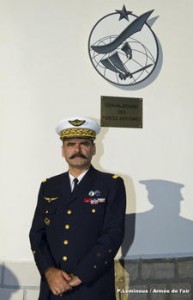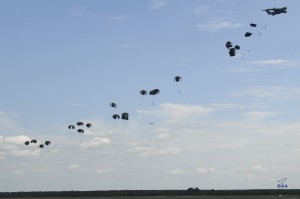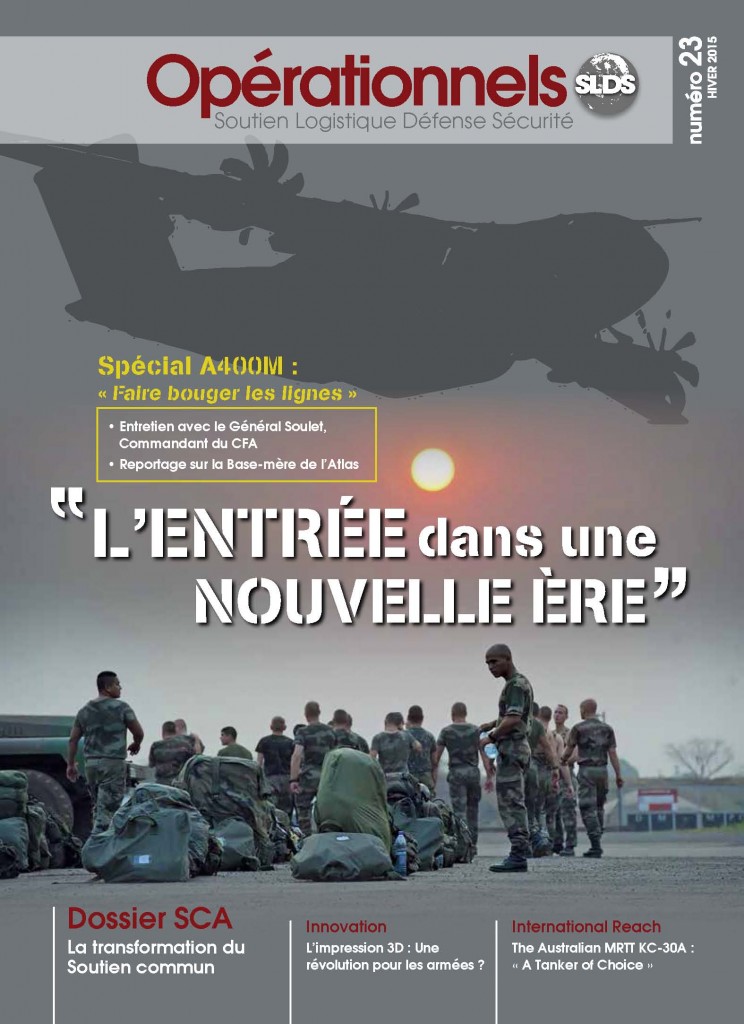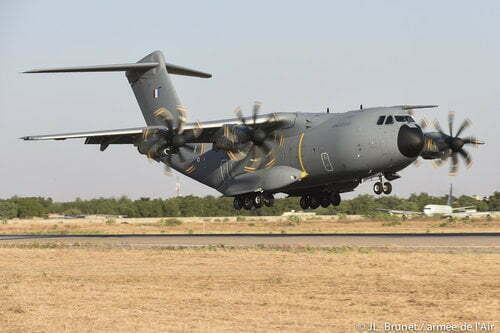2015-01-23 The A400M has entered into service with the French Air Force concurrent with a change in the French Air Force (FAF) command structure and the growing importance of the European Air Transport Command (EATC).
This means that the training, and operational approach of the new French command and the evolution of the EATC will shape the approach to further developing and using the aircraft.
In an interview during her visit to the Bordeaux-Mérignac Air Base in June 2014, Murielle Delaporte interviewed General Serge Soulet, the Commander of the Air Forces, which is a newly readiness command. Her full interview appears in the latest issue of Opérationnels SLDS.
Delaporte is the co-founder of Second Line of Defense, and the publisher and editor-in-chief of Opérationnels SLDS.
In this piece, we will highlight some of the key highlights from that interview.
The new command headed by General Soulet is the Unified Command of the New Generation or the CFA NG.
It provides support for the standing up, and deployment of the French Air Force world-wide.
It is a unique French command drawing together preparation, training and support for the force at home and abroad.
As such, the command is looking at the entire chain of custody for the support to operations of French Air Force platforms.
It is from this perspective that the A400M is being introduced into the FAF and its relationship to the entire lift and combat fleet.
An additional aspect of contextual significance is the emergence of the multinational EATC.
According to the EATC itself, the role is to enhance synergy and capabilities among the member nations airlift and tanking fleets.
The Netherlands, Belgium, France and Germany have put major parts of their air transport- and air-to-air refueling fleets under the operational control (OPCON) of the EATC.
On 22 November 2012 Luxembourg officially joined the EATC, Spain followed on 03 July 2014, finally Italy on 04 December 2014.
Now the missions of almost 200 aircraft are planned, tasked and controlled out of Eindhoven.
In addition to that the EATC runs a nationally defined level of responsibility for aircrew training, coordination of training and exercise objectives as well as the harmonization of appropriate air transport regulations of the participating nations.
The overall objective is to manage the scarce resource air transport as effectively and efficiently as possible.
As Delaporte notes, the introduction of the A400M is both cause and consequence of the EATC.
The A400M as a multinational project allows EATC members to shape ways to work more effectively together and the EATC provides a framework within which multinational cooperation can be enhanced within the role out of the A400M itself, notably with the first users of the aircraft, namely, France, Germany and Spain.

In the interview, General Soulet highlights several key aspects of the A400M roll out.
First, he notes that the Multinational Entry into Service or MEST team played a key role in preparing for the introduction of the aircraft into the FAF.
The French team forged into a MEST worked closely with Airbus Military in training and preparing for the introduction into service of the A400M in 2014.
Second, similar to the position of Air Commodore Warren McDonald who argued that the introduction of the KC-30A has meant that the RAAF has had one foot in operations and another in program development, General Soulet underscores that the A400M will mature as it operates.
This is true because new capabilities are being added to the aircraft over time, and that the maturation of the aircraft requires building in over time the findings from real world operational experience.
Third, a major change facing the FAF or any air force using the A400M, is to unlearn some past experience.
He argues that the A400M essentially changes the nature of the game inherited from the Transall or the C-130.
He argues as well that the aircraft is not simply a logistical asset, but a tactical one in terms of its ability to operate close to the forces engaged in the battlespace.
But this capability to do so will not happen in a day, it will take some time to develop.
Notably, the self-protection systems being added to the aircraft as well as operational experience will be crucial to sorting out the best way to use the A400M in operational insertion and support of force.
“Because of the capability of the A400M, the distinction between logistical and tactical missions is attenuated; it is not simply a cargo aircraft.

The A-400M can operate close to the operational forces. It can operate in an environment significantly degraded and to operate in a certain level of threat as well.”
Fourth, the introduction of the A400M will lead as well to working through how to use the other airlift assets.
The FAF will closely study how to best use the A400M and with that address the question of the modernization of its other lift assets as well.
“The A400M will not be a 100% replacement of all other airlift needs….We will determine the best employment strategy for the legacy and new airlift assets.”
Fifth, the multinational aspect of the program is crucial from his point of view. The existence of the EATC means that common standards and concepts of operations for the A400M can evolve over time. He made it clear in the interview that he does not want to see a divergence in capabilities of a common aircraft as happened between France and Germany with the Transall.
The EATC can play a key role in reaching what he sees as a core objective from deploying a common A400M fleet: “We want to use the same aircraft in the same manner with the same norms and a similar concept of operations.”
For a look at the EATC approach to the A400M see the following:
The EATC will become the biggest future user of the A400M, about 110 to 120 aircraft will in a few years fly on EATC OPCON.
That’ s because the national EATC assigned squadrons fly most on EATC orchestrated and conducted assets for air transport (AT), aeromedical evacuation (AE) and air-to-air refueling (AAR).
Moreover the EATC has an interest and strong will to combine the nations needs to set up international agreed future concepts for the A400M in order to reach out for one European military air transport backbone, one international understanding: The best interoperability for future missions and the benefit for the Participating Nations is the EATC Commander’ s guideline to make the EATC a true enabler in the field of European military AT.
http://eatc-mil.com/105/The-EATC-involvement-in-A400M-matters
The cover of the new issue of Opérationnels SLDS where this interview is published in full:



